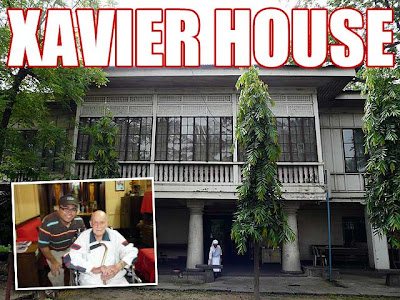
 Sta. Ana, Manila was the seat of the Kingdom of Namayan, one of three major kingdoms that dominated the area around the upper portion of the Pasig River before the arrival of Spaniards. The Heritage Conservation Society recently visited the historic district of Sta. Ana, Manila to familiarize ourselves with the place. Sadly, several historic buildings were being torn down to give way to malls.
Sta. Ana, Manila was the seat of the Kingdom of Namayan, one of three major kingdoms that dominated the area around the upper portion of the Pasig River before the arrival of Spaniards. The Heritage Conservation Society recently visited the historic district of Sta. Ana, Manila to familiarize ourselves with the place. Sadly, several historic buildings were being torn down to give way to malls.The demolition of the Emilio Aguinaldo College, which was previously the Columban Fathers’ residence, former residence of the Franciscan Missionaries of Mary and birthplace of Student Catholic Action, is almost done. And the culprit is none other than heartless SM.
This is not the first time that SM raped our cultural heritage. They had previously demolished the historic Pines Hotel in Baguio City (at the same time cutting hundreds of trees) to build SM City Baguio; the San Lazaro Hippodrome to build SM City San Lazaro; and destroyed the fabric of the Manila civic and government center with SM City Manila built right beside the City Hall of Manila, where the historic YMCA once stood.
Doesn't SM know what adaptive reuse is and how developers in cities around the world use it to revitalize old districts, enhance the character of the place, increase attractiveness and business viability and protect heritage? Sadly, SM is building in a very critical area of the historic district and this will most definitely ruin the historical fabric of the place and the possibility of revitalizing Sta. Ana through tourism.
 Another shocker was the ongoing demolition of the Sta. Ana Racetrack buildings designed by Architect Juan Nakpil, National Artist for Architecture. How would you feel if someone burned a painting by Vicente Manansala? Well, demolishing a masterpiece of Nakpil is similar to that! We were told another group was going to build yet another shopping mall. Do we still lack shopping malls in the country?
Another shocker was the ongoing demolition of the Sta. Ana Racetrack buildings designed by Architect Juan Nakpil, National Artist for Architecture. How would you feel if someone burned a painting by Vicente Manansala? Well, demolishing a masterpiece of Nakpil is similar to that! We were told another group was going to build yet another shopping mall. Do we still lack shopping malls in the country?The shells of the buildings are still there and I am hoping that they preserve these and incorporate them into the shopping mall. That will be a great example of adaptive reuse if they do that!
 When we visited Father James Reuter, S.J. at Xavier House also in Sta. Ana, he mentioned to us that the Jesuits plan to sell the historic property. Fr. Reuter was saddened since Xavier House is very important to the history of our country, especially during the 1986 People Power Revolution where it was a nerve center of media operations. Remember, without the radio broadcasts, there would be no People Power.
When we visited Father James Reuter, S.J. at Xavier House also in Sta. Ana, he mentioned to us that the Jesuits plan to sell the historic property. Fr. Reuter was saddened since Xavier House is very important to the history of our country, especially during the 1986 People Power Revolution where it was a nerve center of media operations. Remember, without the radio broadcasts, there would be no People Power.This was where Fr. Reuter directed the Radyo Bandido broadcasts of June Keithley. These broadcasts are part of the Radio Broadcast of the Philippine People Power Revolution which have been incribed in the UNESCO Memory of the World, UNESCO's program aimed at preserving and disseminating valuable archive holdings and library collections worldwide.
I do hope the Jesuits do not sell the property because it might just become another shopping mall. The Jesuits had previously sold their church in Padre Faura which is now Robinsons Place Manila. I hope students and faculty of the Ateneo de Manila University appeal to Father Provincial not to push through with such plans if there are any. But in the end, I am not opposed to the sale. I am against any future plans of the new owner to demolish the structure.
Anyway, I'll be posting an account of our tour around historic Sta. Ana, particularly the Camarin de la Virgen in the Sta. Ana Church, a National Cultural Treasure.
Part 2: Camarin de la Virgen and more Sta. Ana treasures
Part 3: More on Xavier House and Sta. Ana


















